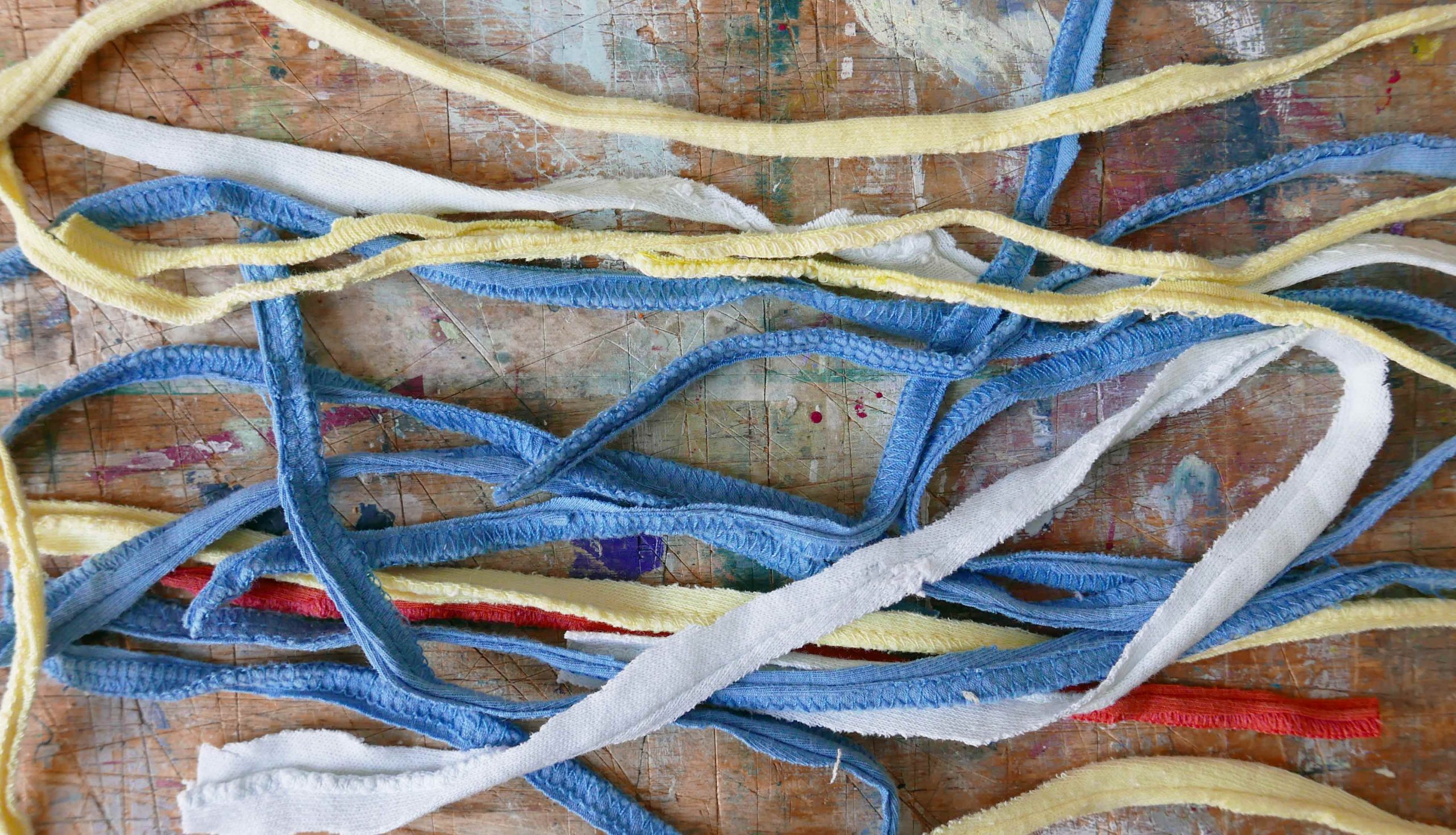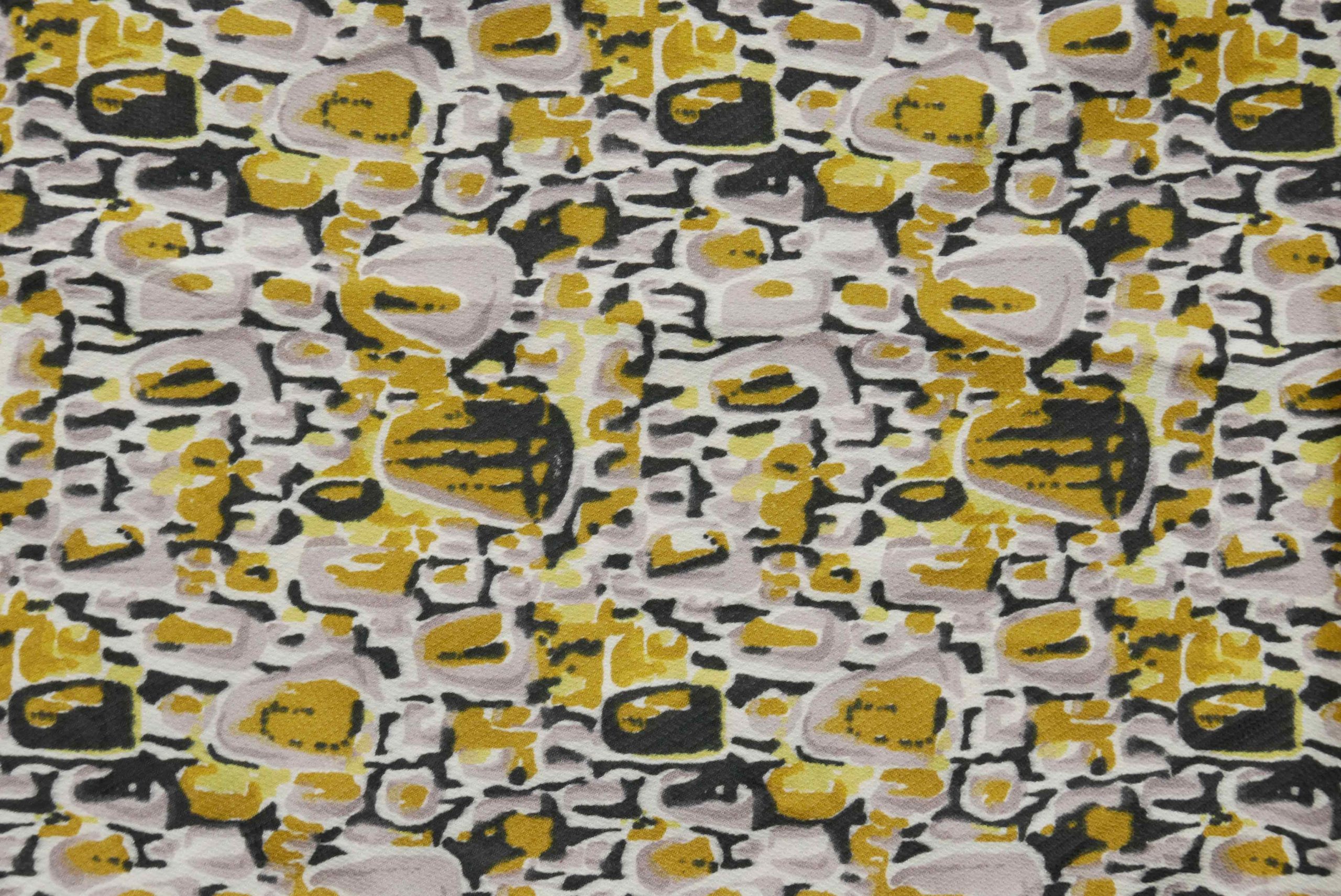Im ersten Textiltext habe ich ein paar Wollgedanken zusammengestrickt. Heute tauchen andere Aspekte des Themas Textil auf: Vom Kabinengepäck, über Faustregeln, Klamotten „to die for“, nachhaltigem Kleid bis zu sehr rührenden Szenen vor einer Hochzeit.

(Scroll down down down for the English summary)
Kabinengepäck
Wie wenig man braucht, wird einem bewusst beim Packen von einem Kabinengepäck. Das sind diese Köfferchen, die wir uns vor ein paar Jahren geholt haben, als wir noch Flugreisen unternommen haben… Sie sind seitdem zum Maß aller Dinge geworden, ob für drei Tage oder für zwei Wochen, es passt alles Nötige rein, auf Zugfahrten und Städtereisen. Auf Reisen kommen automatisch die besten, praktischen und gut kombinierbaren Teile mit, keine von der Sorte „vielleicht werde ich das irgendwann noch anziehen“. Das ist aber noch lange kein Grund, sie nicht zu haben. Auf die können wir uns dann nach der Reise freuen.
Lebensweisheiten
Es kursieren einige Lebensweisheiten, was Kleidung betrifft. Dass wenn frau etwas 2 Jahre nicht angezogen hat, soll frau sich davon trennen. Ich bin so froh etwas wieder zu entdecken, was fünf Jahre oder mehr nicht getragen wurde (vorausgesetzt, ich passe noch rein). Manche Sachen mag ich einfach seit Ewigkeiten, und wenn sie nicht mehr funktionieren verwende ich gerne den Stoff für etwas anderes. Zum Beispiel Nähte aus den alten T-shirts werden Tomatenpflanzen am Stock anbinden.

Arbeitsklamotten
Oder ich verbrauche Sachen als Arbeitsklamotten im Atelier: Ab und zu werden manche Teile als Begleiter der kleckernden Prozesse delegiert. Es kommt aber vor, dass ich feststellen muss, dass einige Arbeitsklamotten irgendwie fitter aussehen, als das, was ich als alltagstauglich definiere. Dann wird auch mal wieder getauscht.
Faustregel
Die Faustregel besagt, wenn ein Teil gekauft wird, wird dafür ein anderes entsorgt. So soll die Zahl der Kleiderbügel im Schrank unverändert bleiben. Ich stelle mir vor, wie jemand mit einer schicken Papiertasche mit Modelabel-Logo drauf vom Einkaufen nach Hause kommt, um, noch bevor das neue Teil vor dem Spiegel anprobiert und mit anderen Fummelchen kombiniert wird, ein Opfer aus dem Schrank auswählt und zum Altkleidercontainer rennt, damit die Rechnung stimmt. Echt jetzt?
Das nachhaltige Kleid? Das hängt nämlich bereits im Schrank.

Zweite Hand
Secondhand-Klamotten sind nicht jedermanns Sache, über die verschiedenen Plus-Minus Probleme drumherum wurde schon mehrmals geschrieben. Bei mir ist es etwa die Hälfte von dem, was ich habe. Für mich ist ein interessanter Aspekt des zweiten Umlaufs von Kleidung die Tatsache, dass bei denen sichtbar wird, wie einige Teile alt werden. (Wenn es auch bei Menschen ginge, hoho!). Bei neuen Stoffen ist es nicht leicht einzuschätzen, wie sie ein paar Wäschen später aussehen werden und so ist die Enttäuschung beim Secondhand eingegrenzt. Und das Phänomen „Aktuelle Farben“ – bei zweiter Hand gibt es das Problem nicht, dass einige Farbtöne für eine Saison völlig verschwinden, und dazu meistens diejenigen, auf die ich gerade Lust und Wellenlänge habe.
Für ein T-Shirt sterben
In der Innenstadt laufen Jugendliche gut ausbalanciert mit immer mindestens zwei Tüten einer Klamottenbilligkette herum. Ich höre eine Teenagerin zu ihrer Freundin sagen: „Für so ein T-Shirt würde ich sterben“.
Hätte ich das vor zwanzig Jahren gehört, hätte ich mir ein paar Gedanken in Richtung exaltierte Pubertierende zusammengemurmelt.
Vor zehn Jahren, als die Arbeitszustände der Textilindustrie um die Welt gingen, hätte ich gesagt „Du nicht, aber jemand bestimmt“.
Heute: „Das wirst du garantiert“.

Ein Erlebnis der dritten Art
Zum Schluss etwas Positives, ein uriges Textilerlebnis der Gemeinsamkeit, guter Schwingung, Handarbeit, der festgehaltenen Zeit, wie ein Flash…
Meine Freunde haben ihre Freunde und Familien zum gemeinsamen Vorfeiern ihrer Hochzeit für eine Woche in ein Wald in Irland eingeladen, die Runde wurde immer größer und geselliger.
Ich kann mich an einen Nachmittag erinnern, als die Männer in dem Wald nach Brennholz suchten und die Frauen saßen in einem Haus im Kreis und schmückten den langen Rock der Braut mit Perlen. Der musste nämlich bald fertig werden. Diese Runde war für mich unvergesslich. Ich muss oft daran denken, damals kannte ich die meisten Frauen gerade seit ein paar Tagen, dieser Moment hat uns in eine unbestimmte Zeit versetzt, das konnte ein Jahrhundert früher oder sogar zwei oder an einem anderen Ort gewesen sein. Gerade die gemeinsame Handarbeit an einem gemeinsamen Teil, mit jeder Perle, Atom für Atom nähten wir die guten Wünsche daran…

Die Bedeutung vom Gewebe
und Textil ist natürlich viel komplexer als das Thema Klamotten. Es ist ein Bereich der verschiedenen Techniken, Künsten, Kulturen und Philosophien, in dem gerade in den Gang gesetzten Wandel der Welt spielen Textilien eine immer größere Rolle. Kleidung ist nur ein Bruchteil davon, aber so zu sagen hautnah, hier kann der persönliche Bezug zu der weltweiten Problematik anfangen. Dann gibt es Heimtextilien, die auch direkten Körperkontakt mit uns teilen. Dann Beobachtungen der Außenwelt: Tragetasche im Laden, Sitzpolsterung im Bus. Urban knitting, Behäkeltes im Stadtbild. Mit textilen Kunstwelten gefüllte Halle des Arsenale beim Biennale 2017 in Venedig, die durch eine geballte Ladung an Projekten davon zeugt, dass es sich um keine Randerscheinung handelt.
Schließlich bestehen wir alle aus Gewebe… Und befinden uns im Netzwerk und sogar Verstrickungen… Das Thema wird also immer wieder auftauchen.

ENGLISH SUMMARY: Textile thoughts 2: rules of thumb and a sustainable dress
In the first Textiletext I shared some thoughts and ideas about wool. This time there are some apects of textile issues, starting with cabin baggage, over rules of thumb and sustainable dresses, up to a moving wedding scene.
Cabin baggage
(I can’t help it: keep reading it Cabbage)
When packing a cabin baggage, you realize how little you need. These are the little suitcases we got ourselves a few years ago when we still used to travel by plane… Since then they have become the measure of all things, whether for three days or two weeks – everything necessary fits in, on train journeys and city trips. When we travel, the best, most practical and easily combined parts automatically come with us, not the ones of the kind “maybe I’ll wear this some day”. But that is not a reason not to have them. We can look forward to them after the journey.
Worldly wisdom
There are some rules circulating concerning clothing. That if a woman hasn’t been wearing something for two years, she should get rid of it. I am so glad to rediscover something that hasn’t been worn for five years or more (assuming I still fit in). Some things I just like for ages, and when they don’t work anymore I like to use the fabric for something else.
Working clothes
Or I use things as working clothes in the studio: From time to time, some parts are delegated as companions of the painting processes. But it happens that I have to admit that some work clothes somehow look fitter than what I define as suitable for everyday use. Then we swap again.
Rule of thumb
The rule of thumb is that if one part is purchased, another part should be disposed of in return. Thus the number of hangers in the wardrobe should remain unchanged. I imagine someone coming home from shopping with a fancy paper bag with a fashion label logo on it, and before the new piece is even tried on in front of the mirror and combined with other things, she picks a victim out of the closet and runs to the old clothes container to get the bill right. Can you believe this?
The sustainable dress? It’s the one already hanging in the closet.
Second-hand
Second hand clothes are not for everyone, the various plus-minus problems around them have been written about several times. With me, and it’s about half of what I got, an interesting aspect of the second circulation of clothing is the fact that some parts of it show how they age ( If it could also work with humans, hoho!). With new fabrics it is not easy to estimate what they will look like a few washes later and so the disappointment with second-hand fabrics is limited. And the phenomenon of “current colors” – with the second hand stuff it does not happen that some hues disappear completely for a season, and mostly those that I am just in the mood and wavelength for.
A T-shirt to die for
In the city centre young people walk around in a well-balanced way with always at least two bags of a cheap clothing chain. I hear a teenage girl say to her friend, “I’d die for a T-shirt like that.”
If I had heard that twenty years ago, I would have mumbled together a few thoughts towards exalted pubescent people.
Ten years ago, when the working conditions of the textile industry went around the world, I would have said “You won’t, but someone certainly will”.
Today: “You will, for sure”.
An experience of the third kind
At the end something positive, a rustic textile experience of togetherness, good vibration, handwork, of the time standing still, like a flash… My friends invited their friends and families to celebrate their wedding together for one week in a forest in Ireland. Each day the group grew larger and more convivial.
I can remember one afternoon when the men were looking for firewood in the woods and the women were sitting in a house in a circle, decorating the bride’s long skirt with beads. It had to be finished soon. This circle was unforgettable for me. I often have to think about it, at that time I had known most women just for a few days, this moment took us into an indefinite time, it could have been a century or even two earlier or in another place. Especially the common handwork on a common part, with each bead, atom by atom we sewed the good wishes on it…
The meaning of fabric and textile